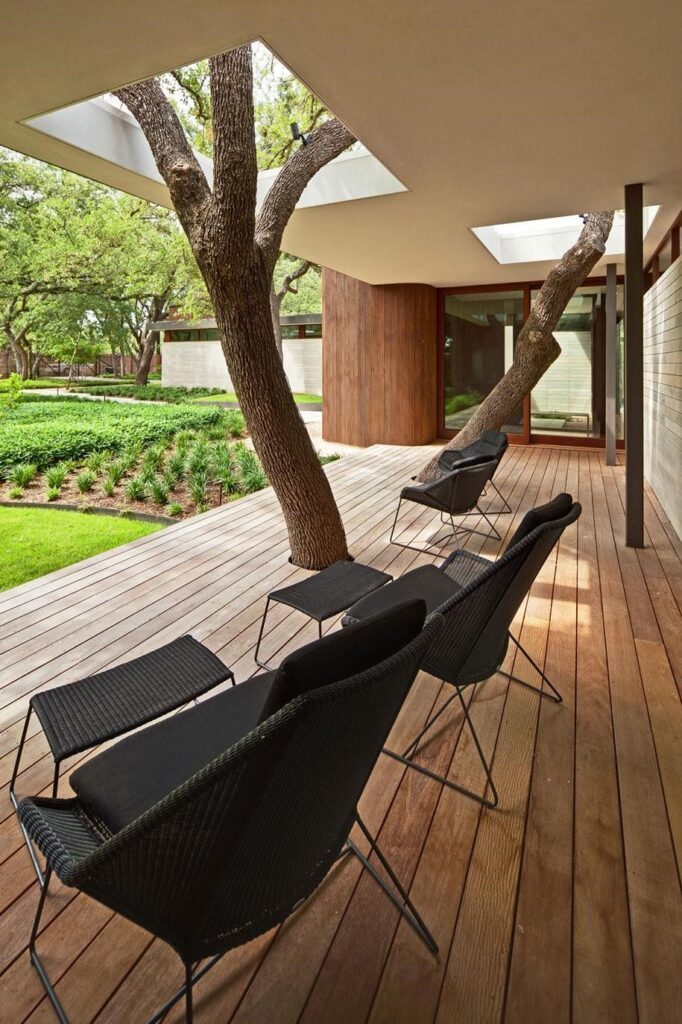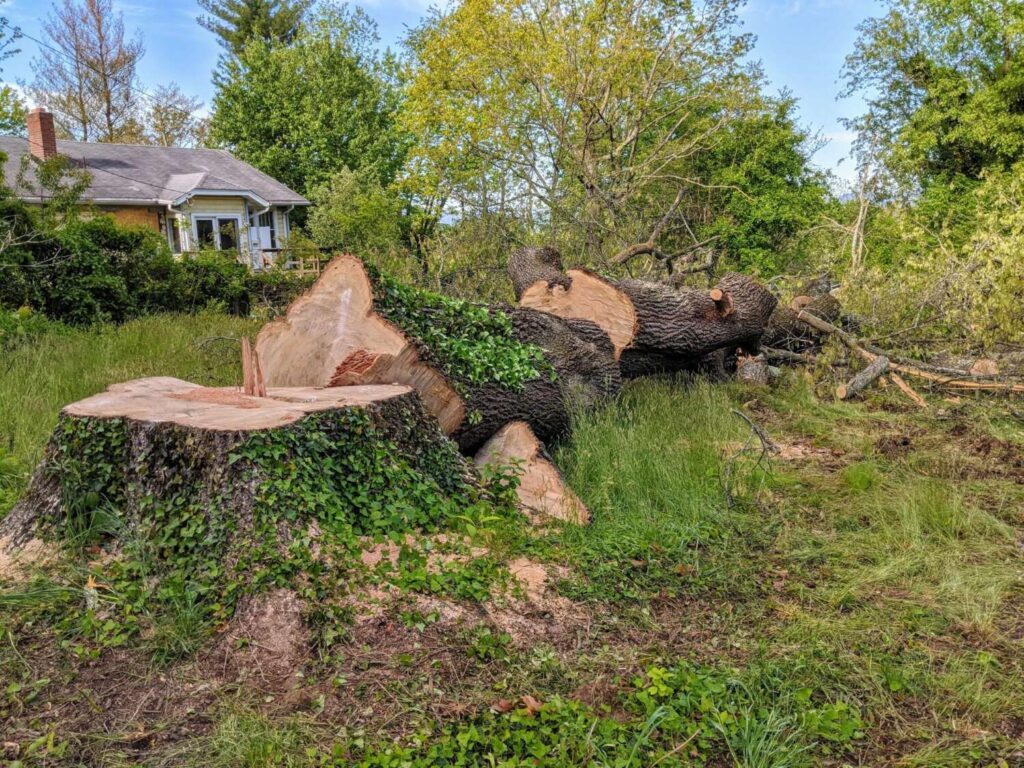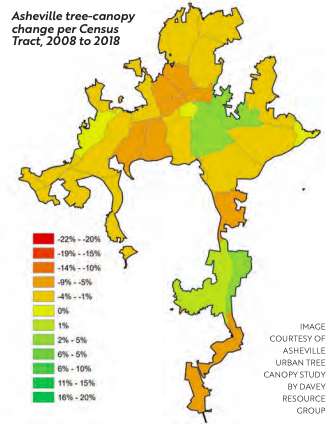Asheville is treasured by residents and visitors alike for the natural beauty surrounding the city. Our region is covered with forests, teeming with wildlife, and saturated with mountain views. Like all growing cities, Asheville faces the issue of preserving nature while promoting smart growth that propels our economy and serves our citizens.
Saving existing tree canopy and planting new trees within the city provides numerous benefits for both the natural environment and the humans who live and visit here. Unfortunately, Asheville has seen a decline in tree canopy cover of more than 6 percent since 2008, with some neighborhoods experiencing more than 30 percent canopy cover decline.

Despite the losses, it is not too late to preserve our urban forest. Builders and developers are in a unique position to lead the way on tree preservation and augmentation. Implementing smart-growth principles in the development and building process has benefits for both the economic bottom line as well as the health and well-being of the environment and residents.
Benefits of Urban Trees
Urban forests provide a multitude of social, economic and environmental benefits, including offering urban cooling, reducing air pollution, lowering stress, improving biodiversity, managing stormwater, combating obesity, increasing property values, and mitigating climate change through carbon sequestration.
Studies have shown that even a view of nature can reduce stress and increase productivity for workers. The presence of trees increases the utility of public outdoor spaces by providing shade and reducing flooding.
These benefits can be calculated in terms of monetary value to the city. In 2008, Asheville’s urban tree canopy coverage provided $82,348,000 worth of carbon sequestration. The 6 percent canopy loss in the next 10 years resulted in a loss of $7 million worth of carbon-capture benefits. Stormwater mitigation is another example of how the loss of tree canopy cover cost Asheville millions of dollars.
From 2008 to 2018, the increase in stormwater runoff as a result of reduction of tree canopy cover cost the city $1.6 million and totaled approximately 18 million gallons of water. This is equivalent to 27 Olympic-sized swimming pools. Conserving mature tree canopy cover in addition to planting new trees provides incredible economic benefits to the city.
Shade provided by trees, particularly in the summer, can reduce the urban heat-island effect, or the increase in temperatures experienced in cities due to vegetation loss combined with heat capture from the built environment. Hot summer temperatures in the city can lead to health issues, particularly for the elderly and those people in poverty who are less likely able to escape the heat through air conditioning.

A 2019 study in the city of Asheville conducted by the NASA DEVELOP team found that census tracts with high vulnerability (high poverty and/or high rate of elderly residents) were often also those with low tree canopy. Restoring the tree canopy in historically underserved neighborhoods will help ensure that trees are distributed more equitably in Asheville. Addressing this inequality of tree cover can improve living conditions for all city residents.
The presence of trees is also known to increase property values. Preserving mature trees at the time of building is the easiest way to promote canopy cover with new construction and site redesign projects. Trees reduce the energy used by buildings and provide natural beauty, and consumers value mature landscaping in both residential and commercial properties. Proper pre-planning and site design for building projects can reduce job costs associated with landscaping and tree removal, in addition to increasing post-construction values.
Asheville Tree Canopy Study
A recent Tree Canopy Study of Asheville performed by the Davey Resource Group examined data from 2008 to 2018, and noted an overall decline in tree canopy. The modest decline of 6.4 percent loss does not account for canopy that was removed prior to 2008 when the city experienced rapid development.
The study concluded that around 44 percent of Asheville’s land is covered by tree canopy. While this amount is encouraging, it is less than other southern cities and less than the 50 percent benchmark proposed by local tree groups such as the city’s Urban Forestry Commission and the Tree Protection Task Force. While city ordinances are designed to preserve and protect tree canopy cover on public property, more needs to be done to stop tree loss and encourage tree planting in the city, including on private property.
Not surprisingly, the loss of tree canopy in Asheville was greatest in areas with the most development and building, including West Asheville and the area around the Asheville Outlet Mall toward Bent Creek.

While building and development are necessary for the growth of the city, some of the tree loss can be avoided. Reducing the amount of mature canopy removed from building sites can also lessen the impacts of flooding and stormwater runoff, prevent destructive landslides due to erosion, minimize pollution caused by increases in vehicular traffic, and increase shade to prevent deaths and worsened health conditions from the urban heat-island effect.
How to Promote A Healthy Tree Canopy
Builders, developers, and private-property owners can be a part of the solution to canopy loss in Asheville.
Sustainable development practices including pre-planning and site design can avoid unnecessary tree loss. Creating a tree-protection plan as part of the construction-planning process and ensuring that all parties follow that plan will save trees. Understanding how trees live and how construction impacts trees, even without direct contact to the tree itself, is essential to proper tree protection. Conserving existing trees increases the benefits of trees on the site, reduces planting costs, avoids possible fines, and boosts property values.
Through its Green Built Homes program, Green Built Alliance provides guidelines for tree protection on residential development projects, including the creation of a tree-protection plan, installing tree fencing at the drip line, conserving greater than 25 percent of existing trees and natural vegetation on the site, and planting new trees.
Potential buyers and customers in Asheville are becoming more aware of environmental issues within the city and demanding that businesses and developers follow these best practices. A green portfolio and well-planned building site can help a future business or property for sale stand out to an increasingly environmentally minded consumer base.
Mindful planning and tree-canopy conservation should be used to promote environmental equality and justice in the city, and to reduce issues such as the urban heat-island effect on vulnerable populations.
Amy Smith is a professor of science at Purdue University Global and a REALTOR® with Coldwell Banker King in Asheville. She is LEED AP accredited and holds a Master of Science in Forest Ecology and Management, as well as a Master of Science in Environmental Policy. Amy serves as the vice chair of the Asheville Urban Forestry Commission and is a volunteer member of the Asheville Tree Protection Taskforce.
You can also view this article as it was originally published on pages 64-65 of the 2020-2021 edition of the directory.

